Abstract
The success of malaria eradication campaigns depends on the use of all methods which make for a better understanding of the biology and behaviour of mosquito vectors. One such method is precipitin testing, by which it is possible to identify the human or animal origin of blood meals of mosquitos and thereby to determine their host preferences and vectorial importance, both generally and locally.
In 1955, the World Health Organization in agreement with the Lister Institute of Preventive Medicine, Elstree, England, set up a precipitin test service related to entomological surveys in malaria eradication programmes and available to national research and WHO field personnel. The purpose was to stimulate interest in the study of bionomics of Anopheles species, to facilitate the identification of blood meals of Anopheles, to eliminate experimental errors by the use of a standardized technique and highly sensitive antisera, and finally to apply the results in the strategy of malaria eradication.
The results obtained over the past five years are summarized in tabular form. The study—the largest ever undertaken—included 51 species of Anopheles and 56 377 tests, of which 93.9% yielded positive results, are reviewed. The available knowledge of the vectorial importance of 39 species of Anopheles is compared with their human blood ratio, this term being used to express the percentage of human blood in relation to all precipitin tests found positive.
Full text
PDF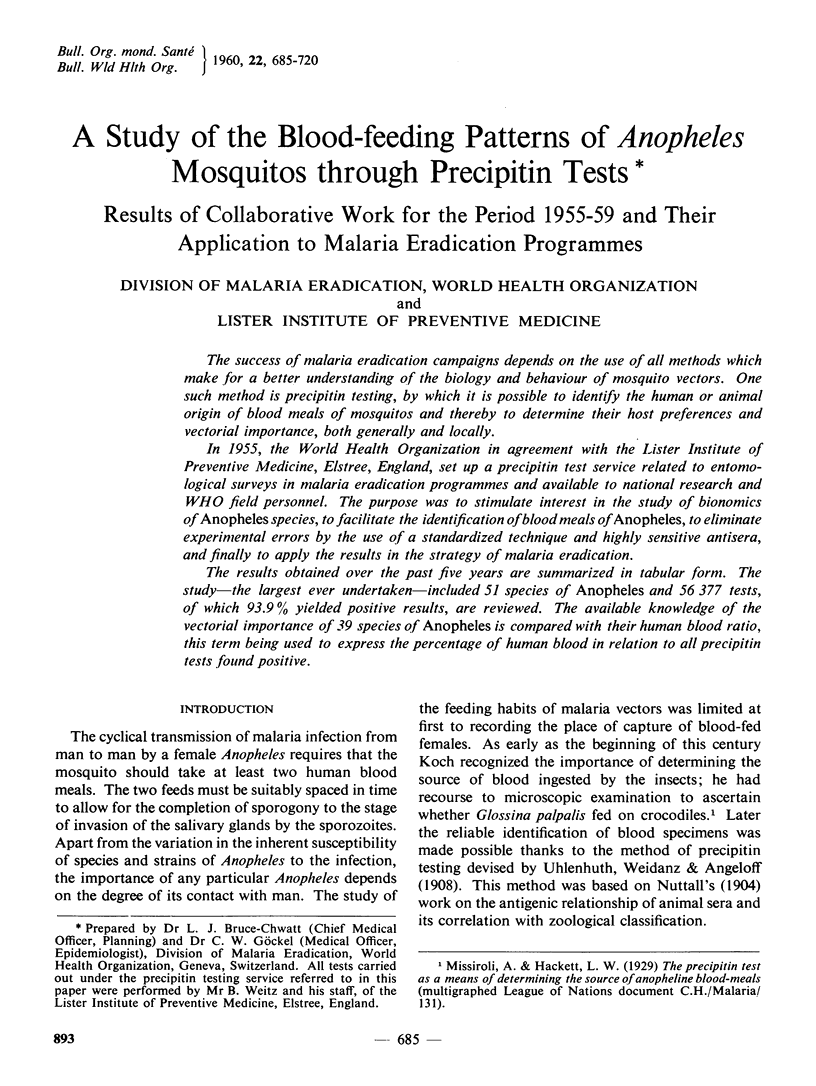
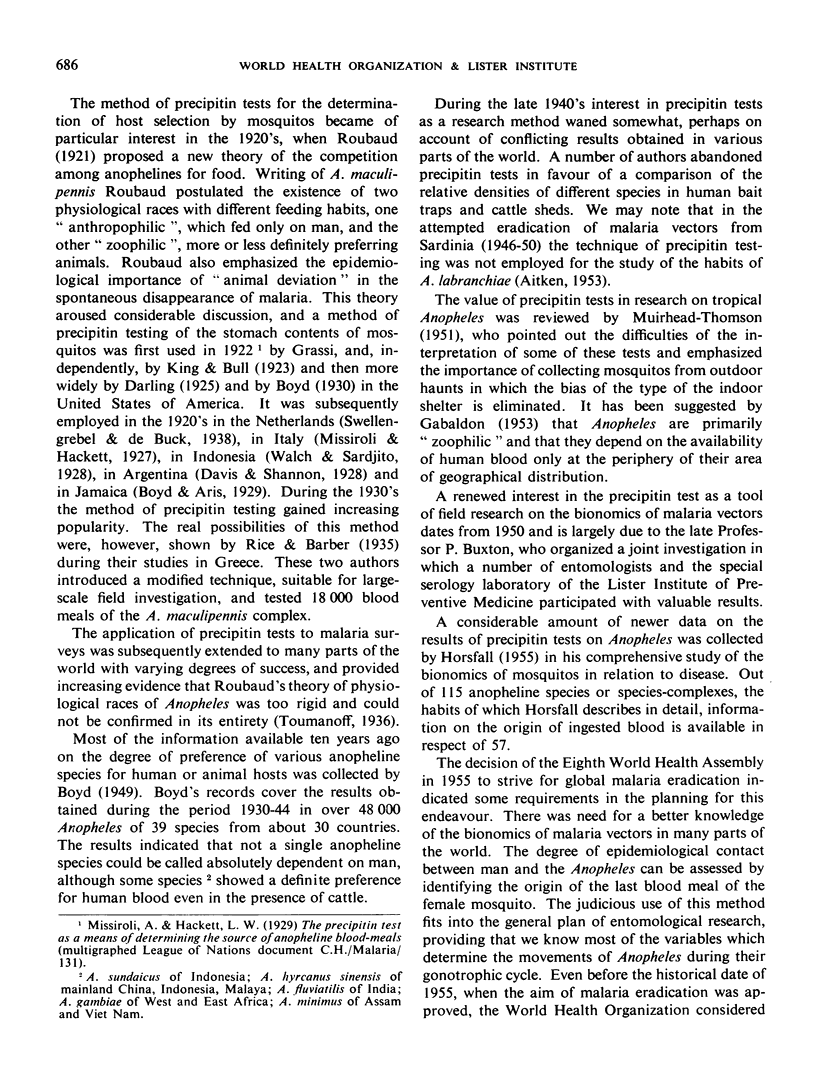
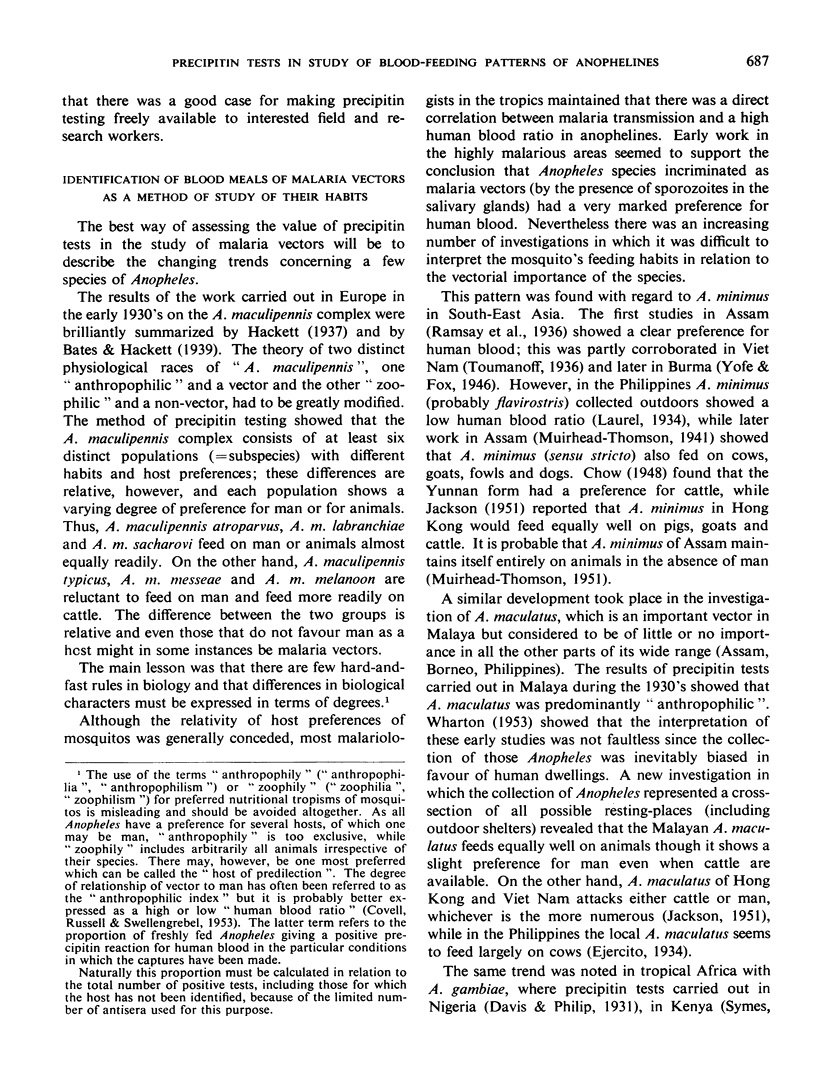
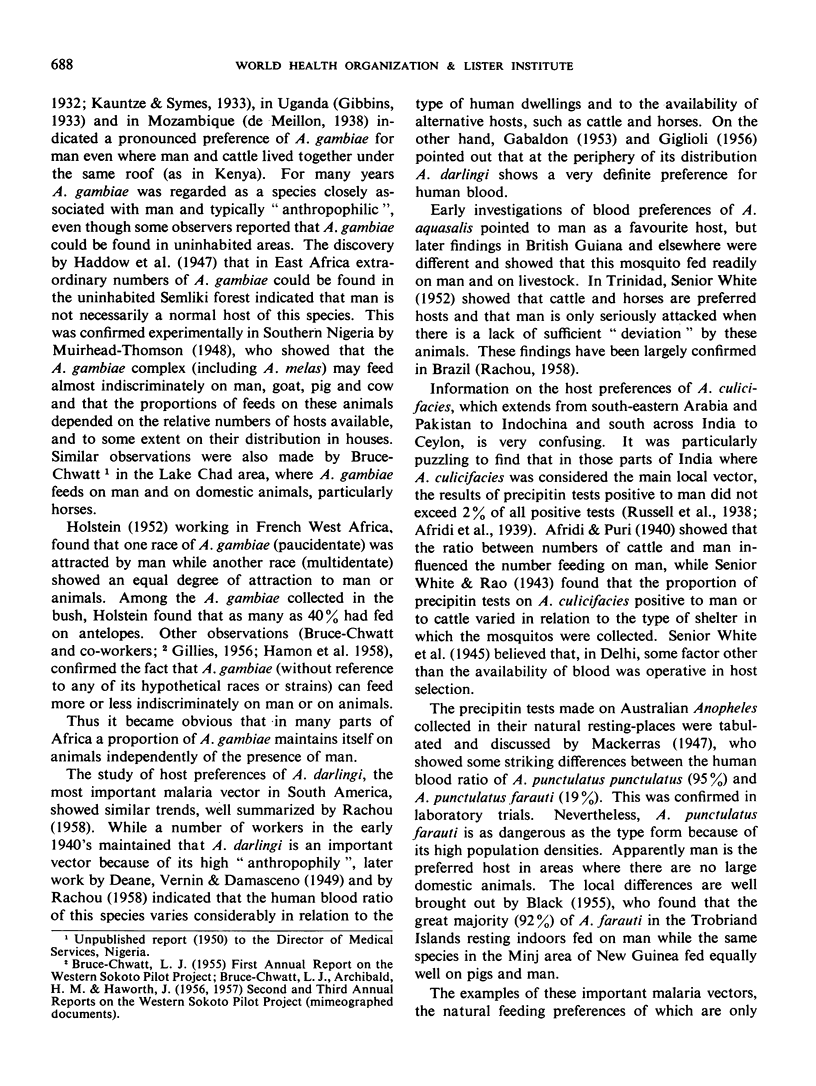
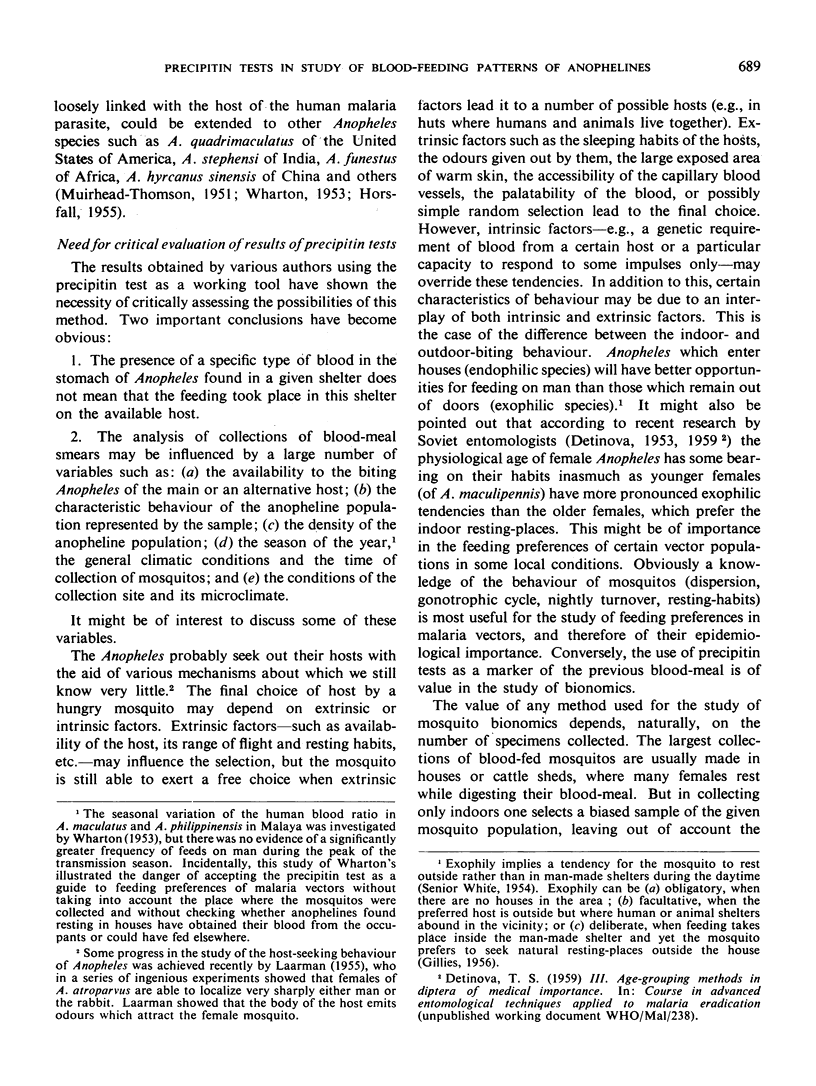
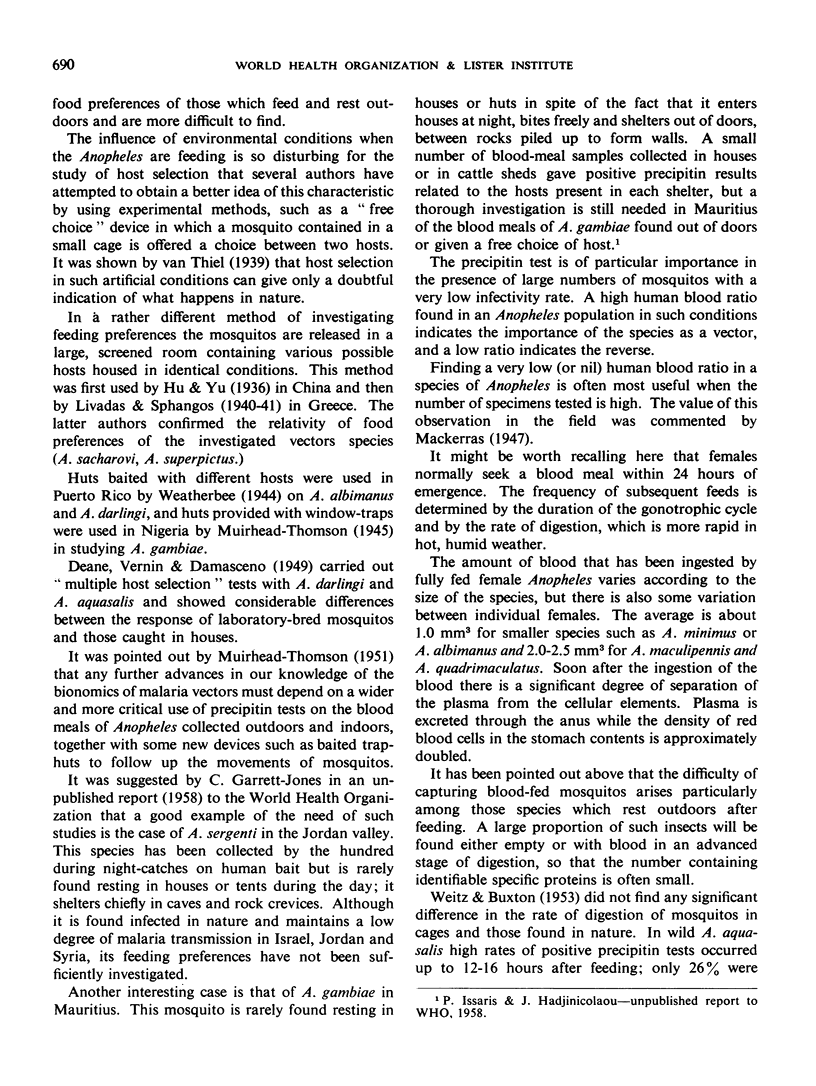
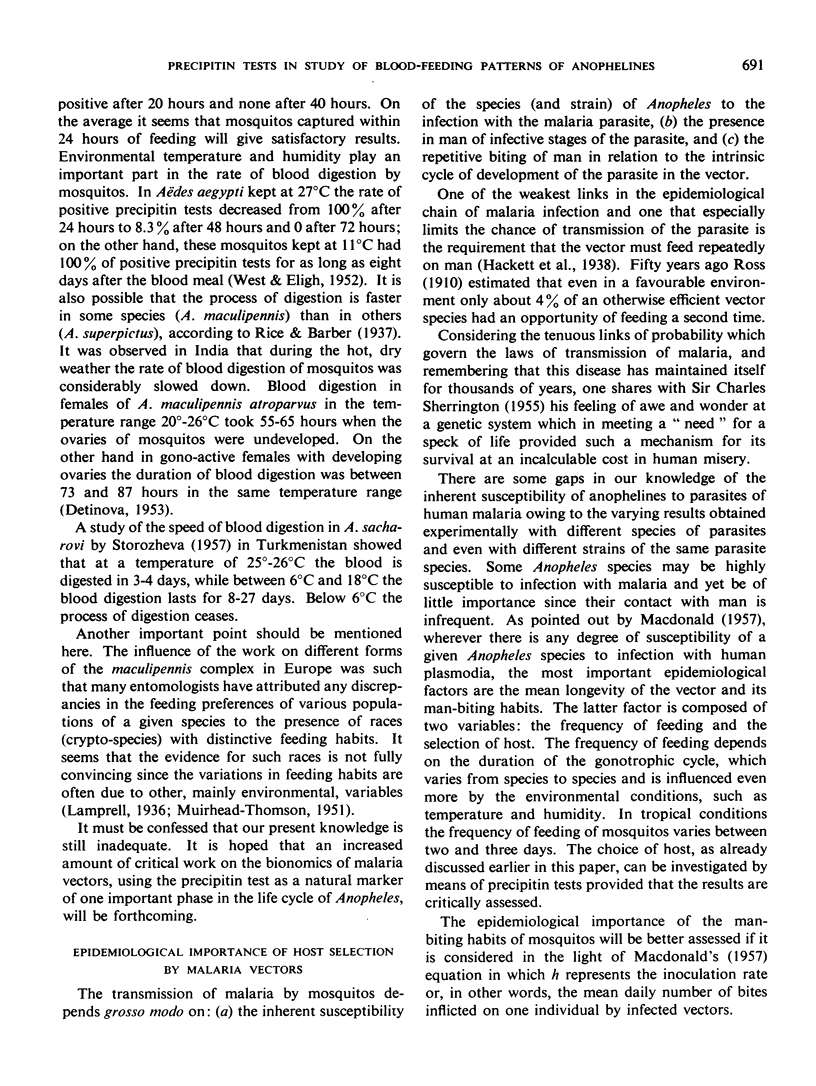

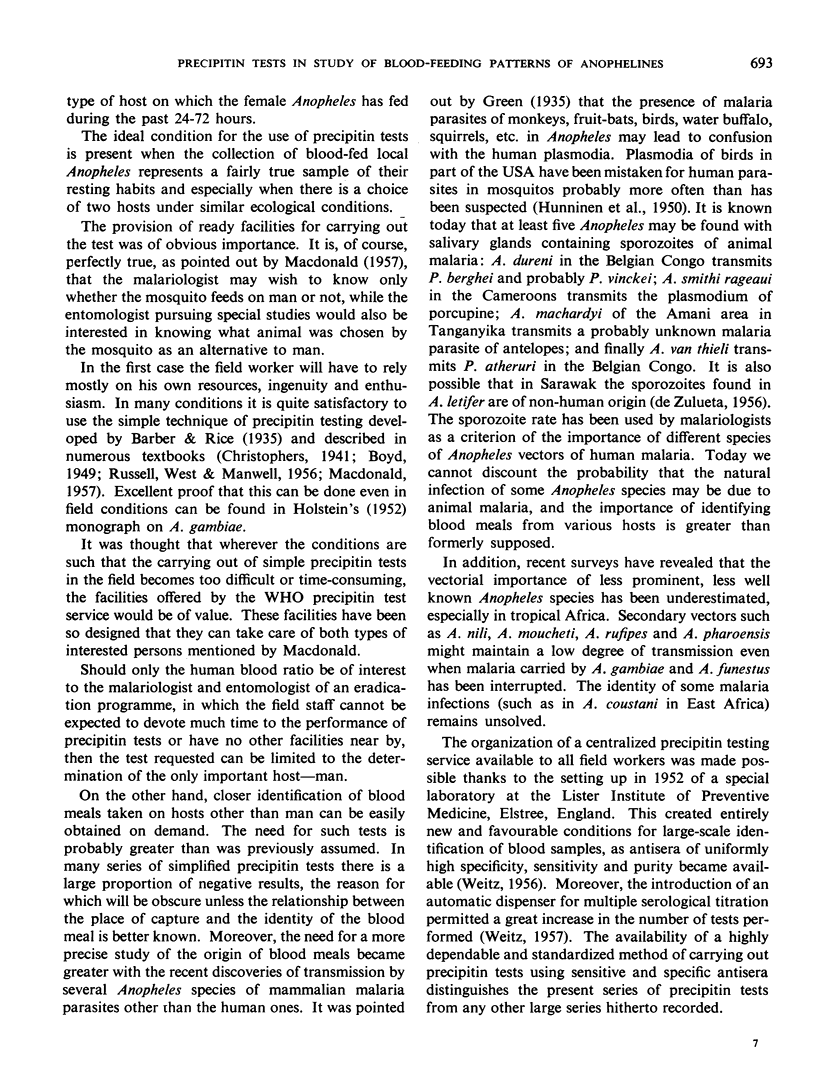
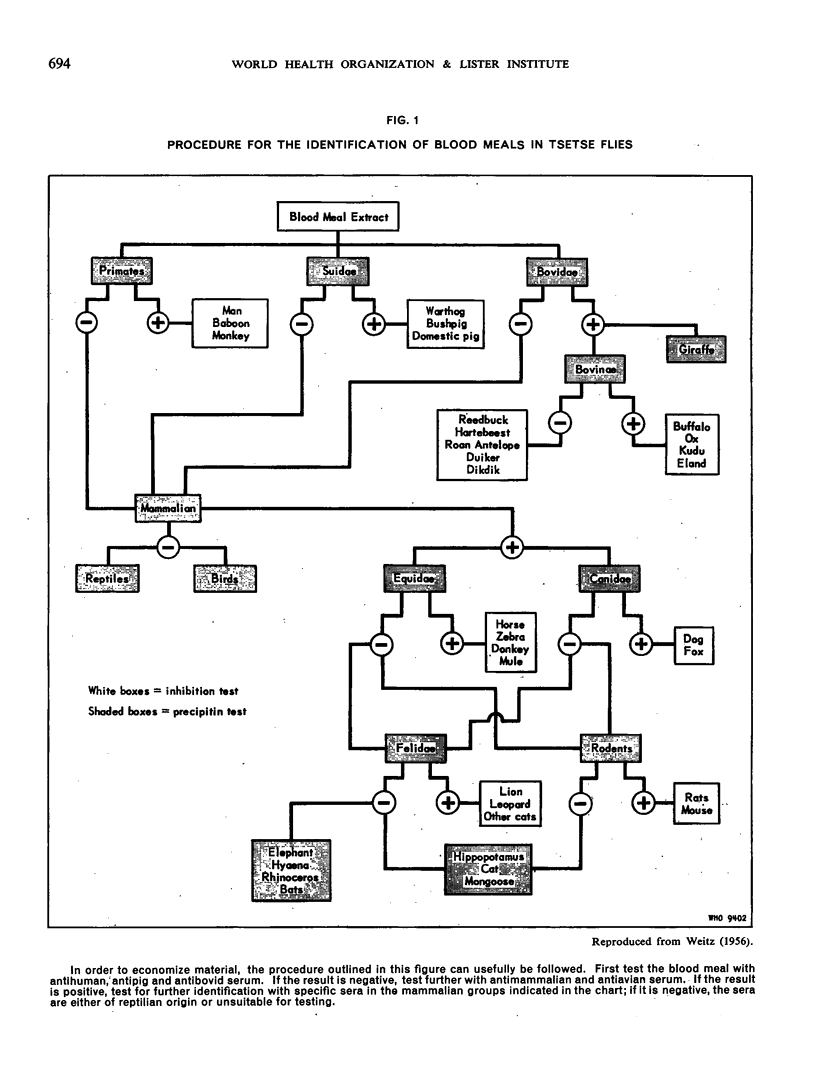
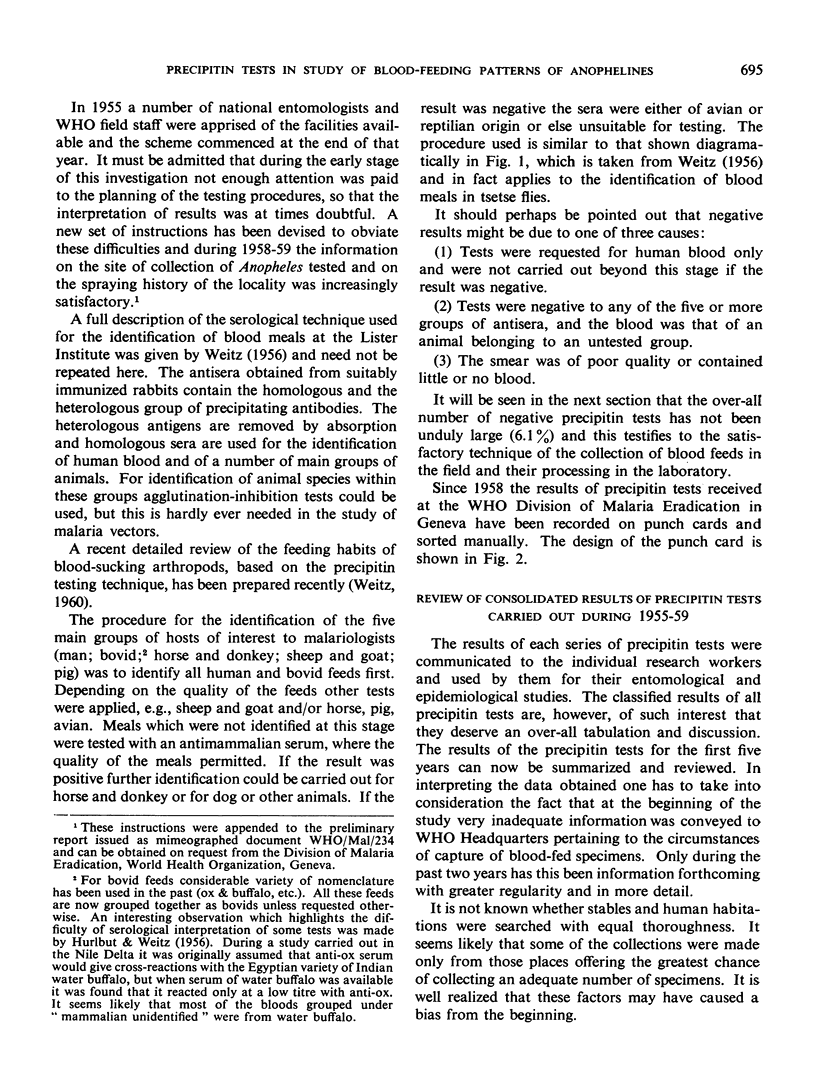
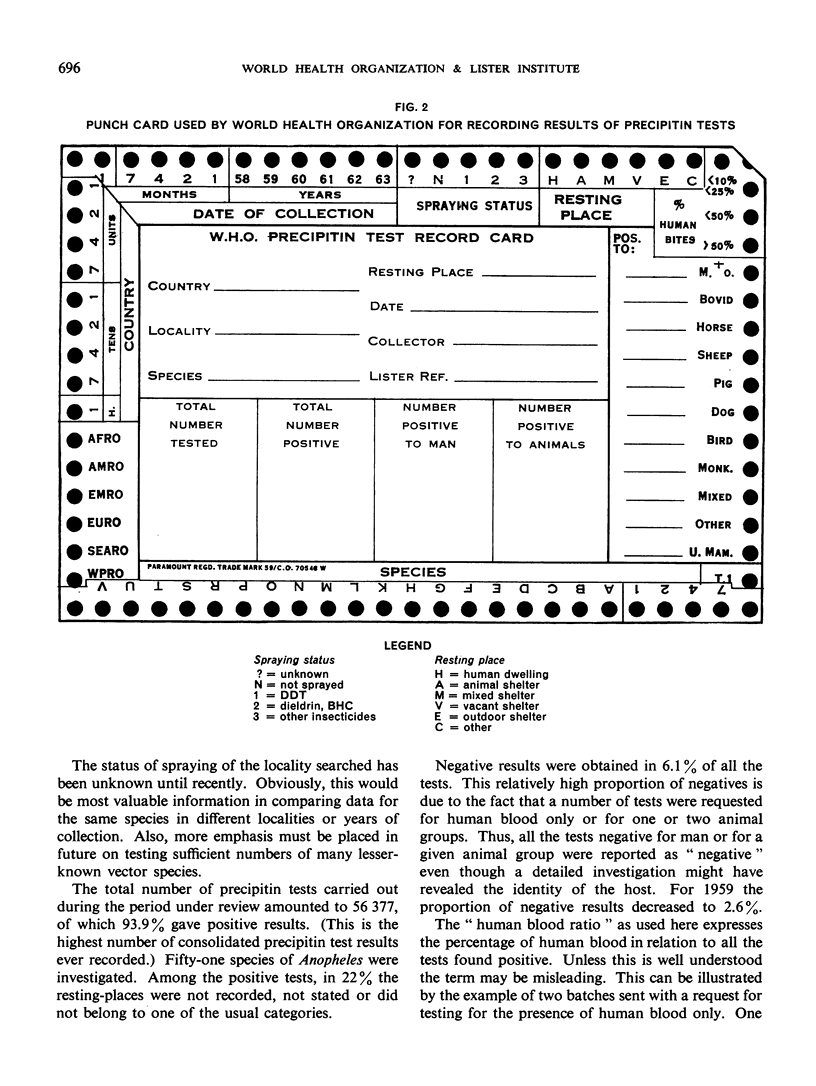

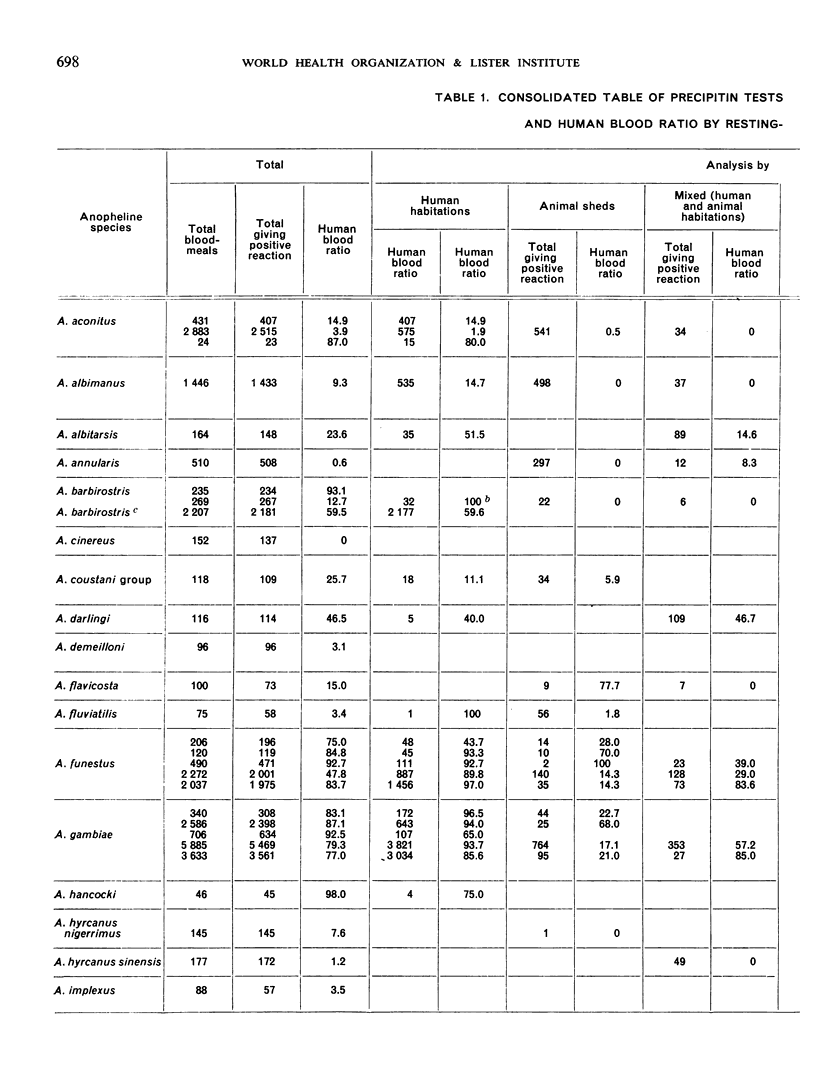
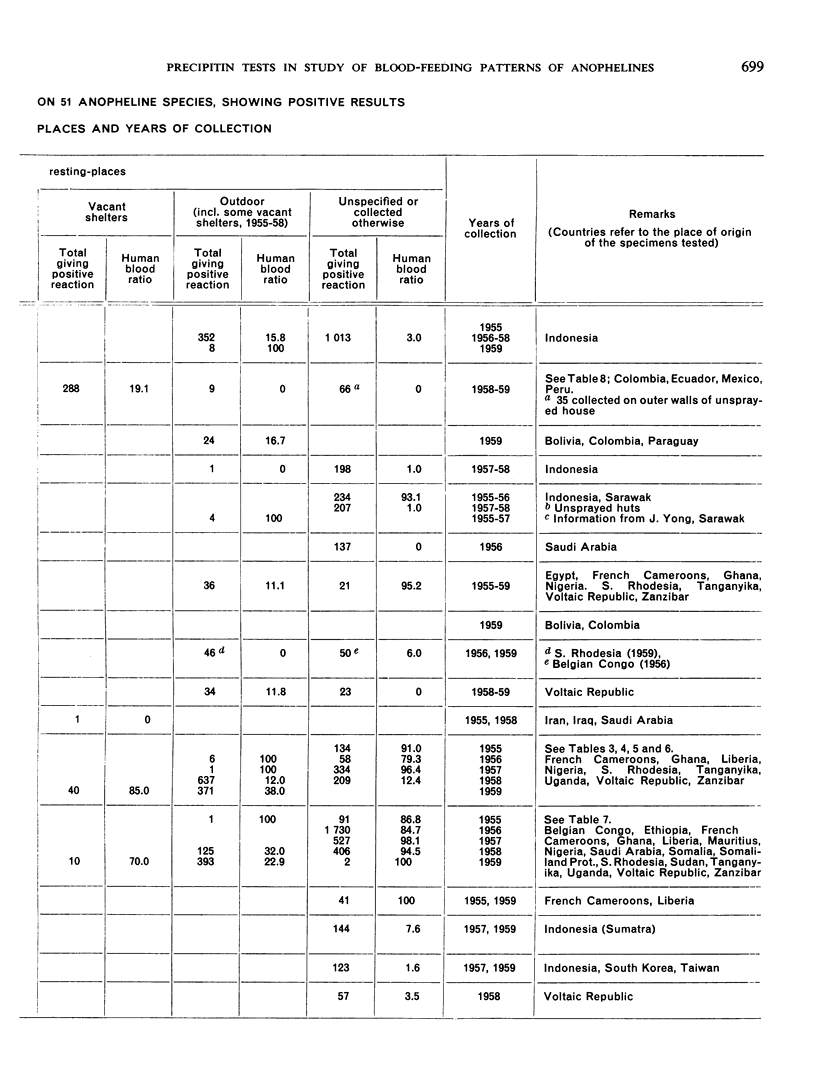
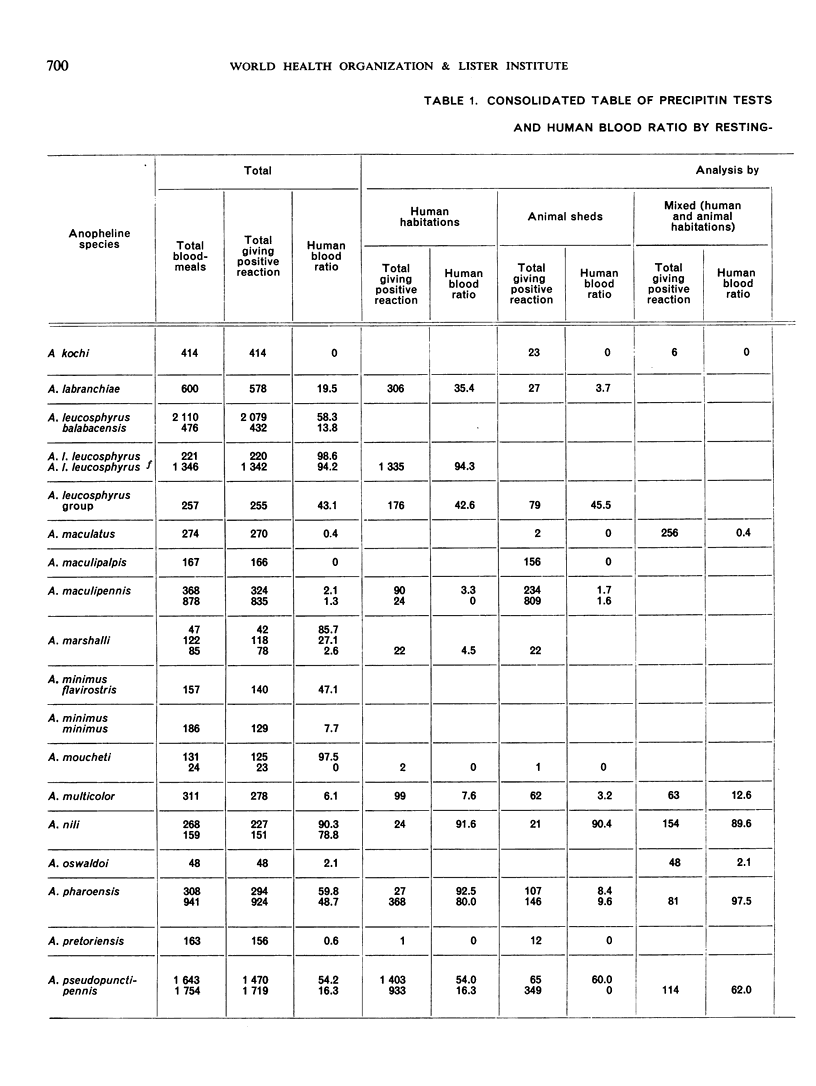
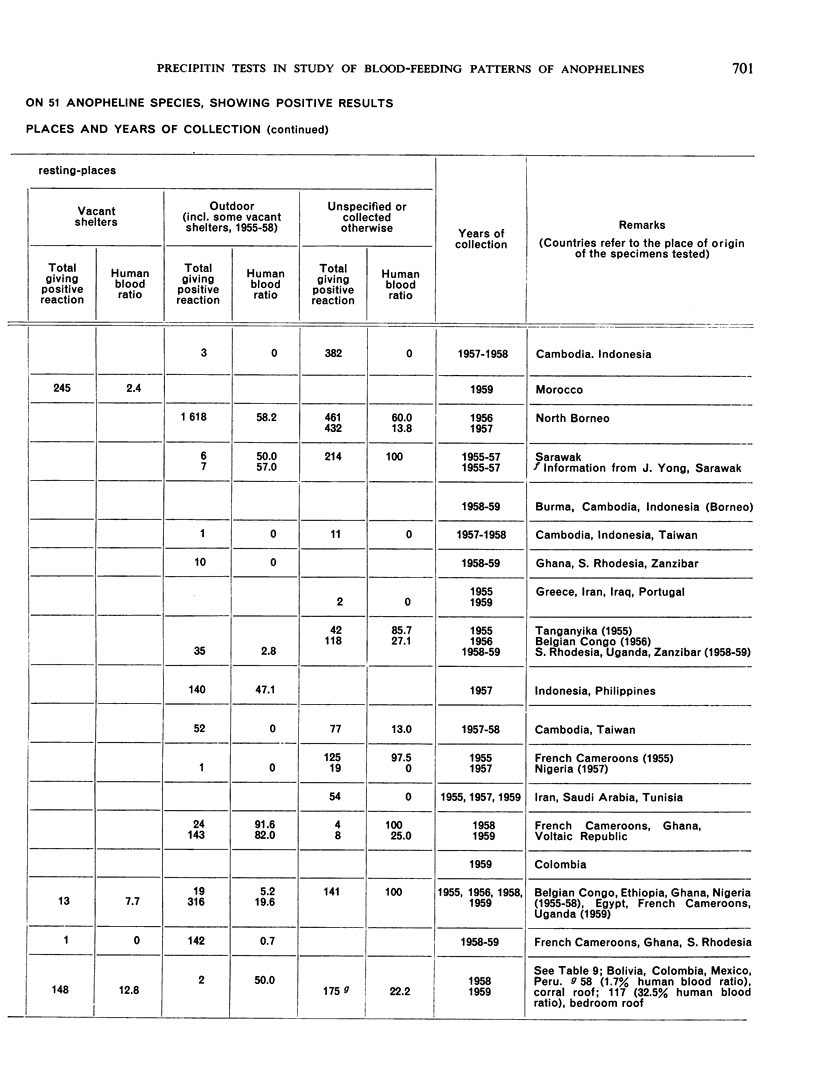
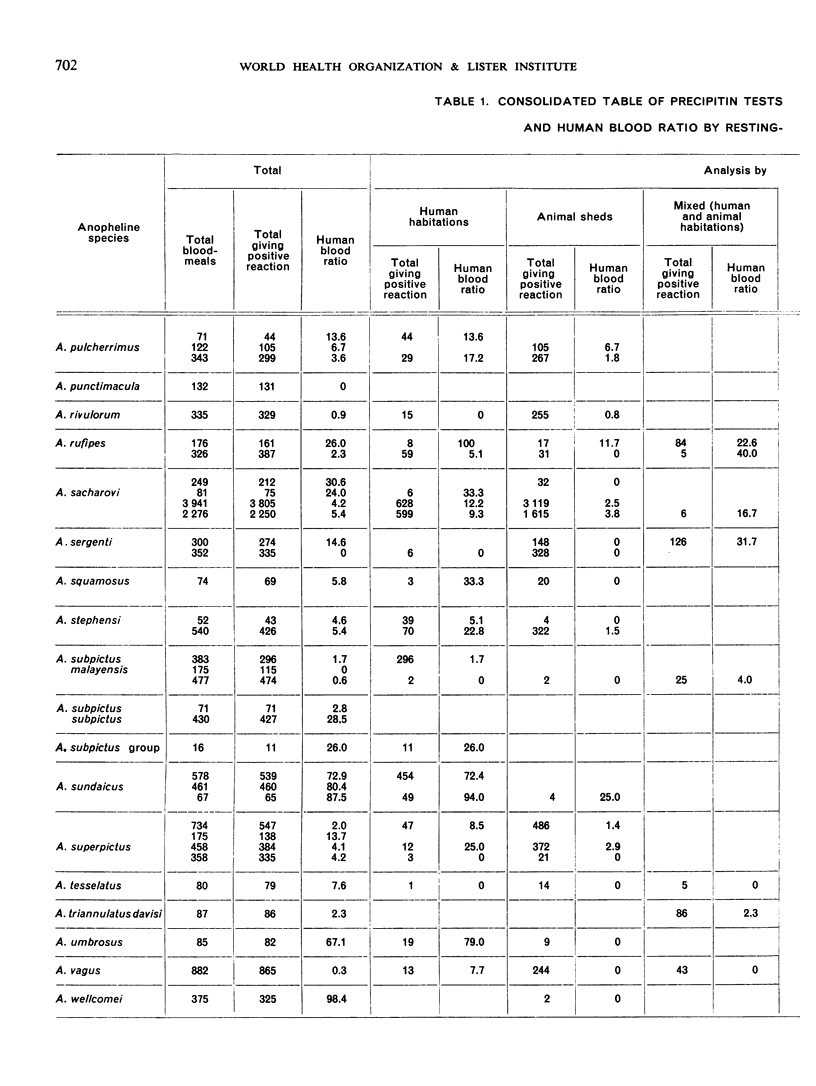
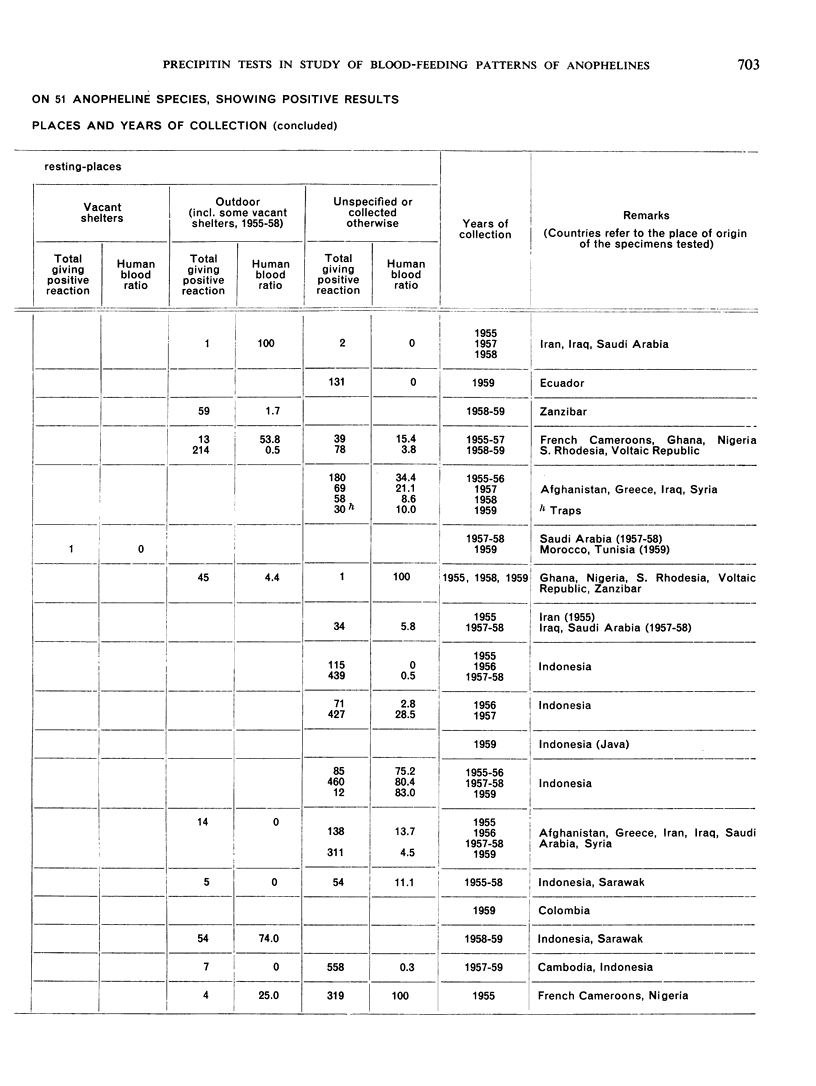
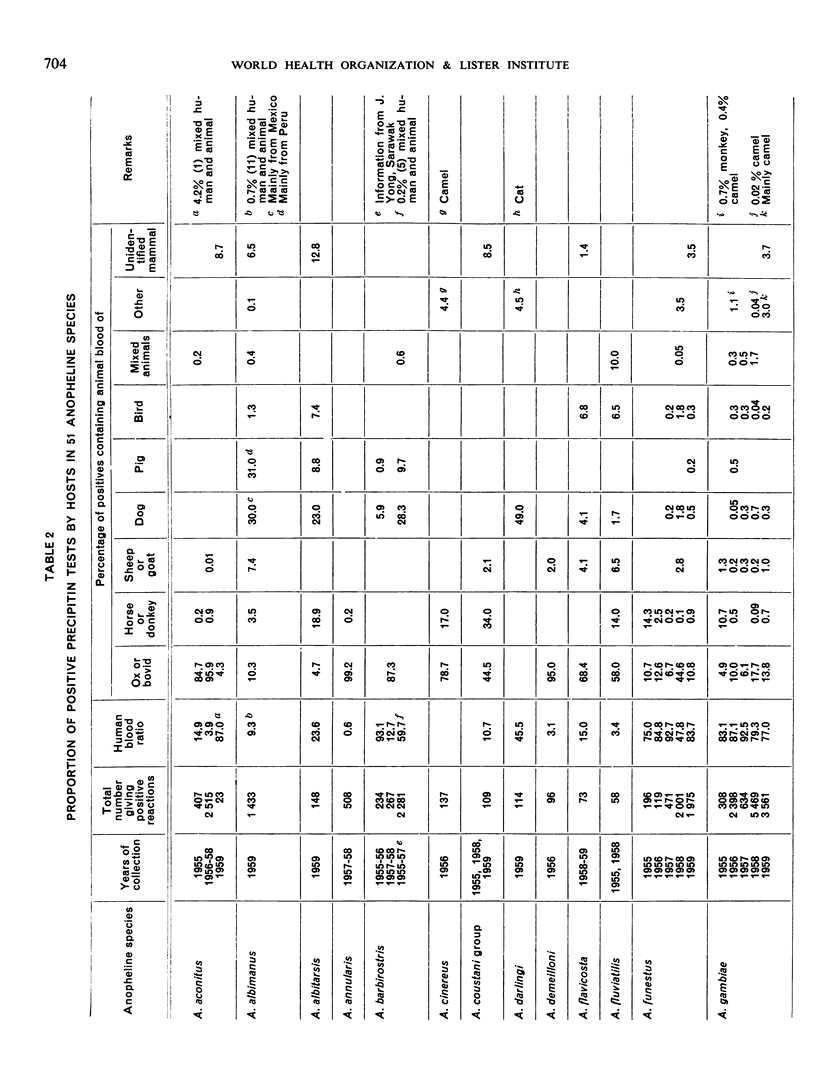
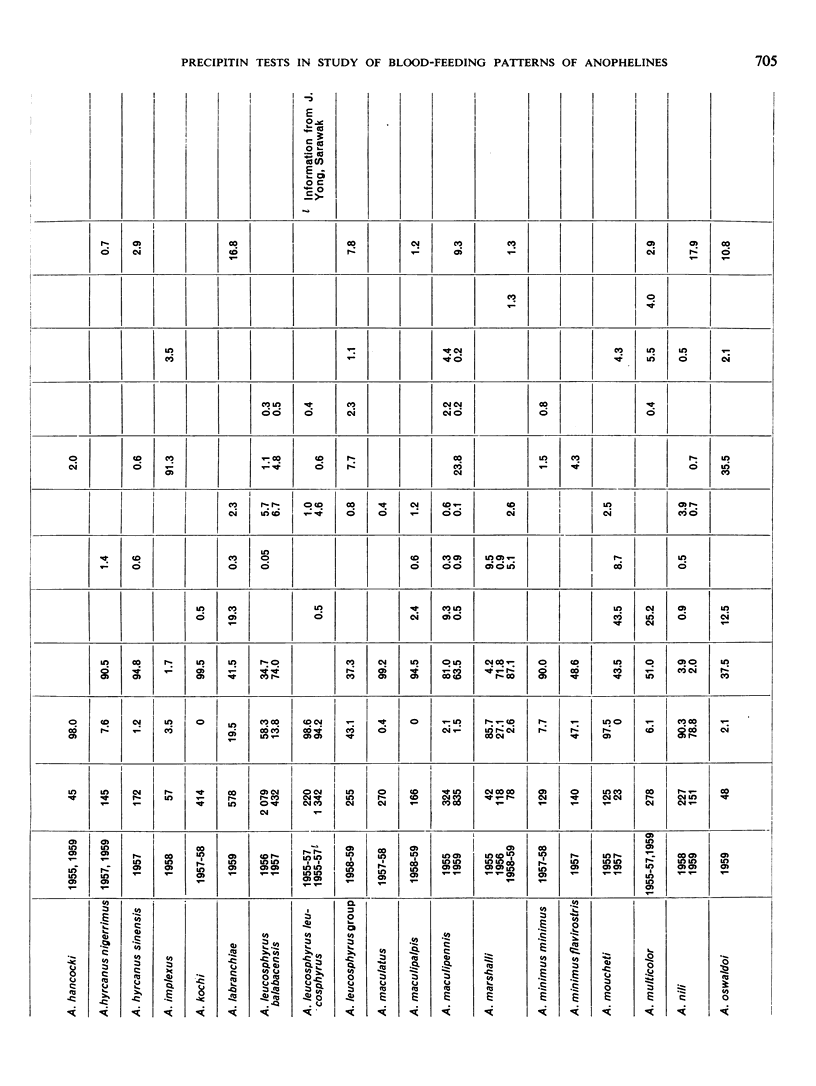
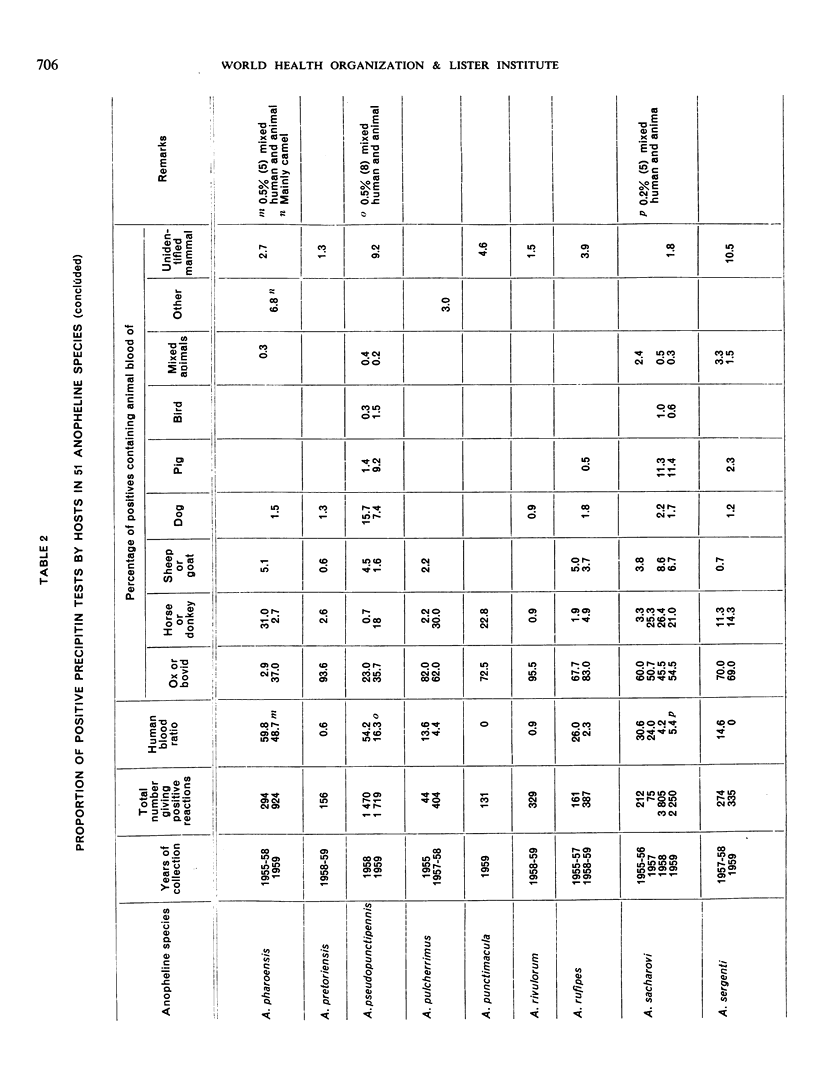
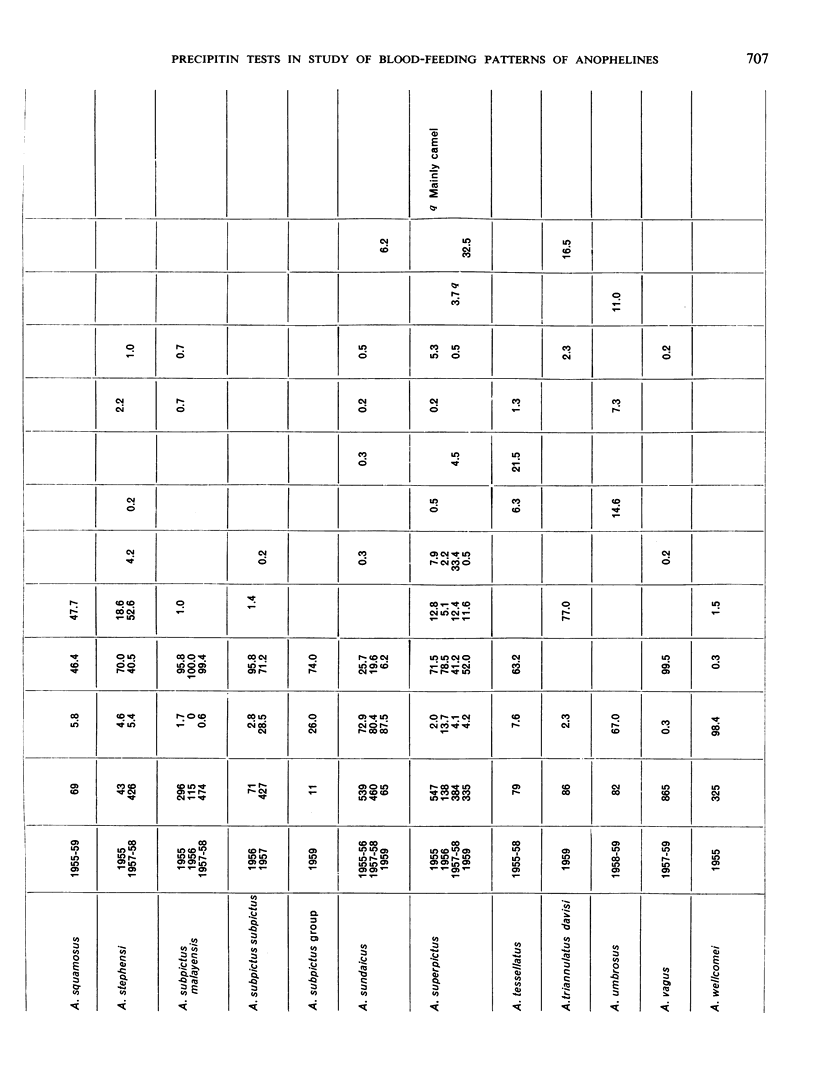

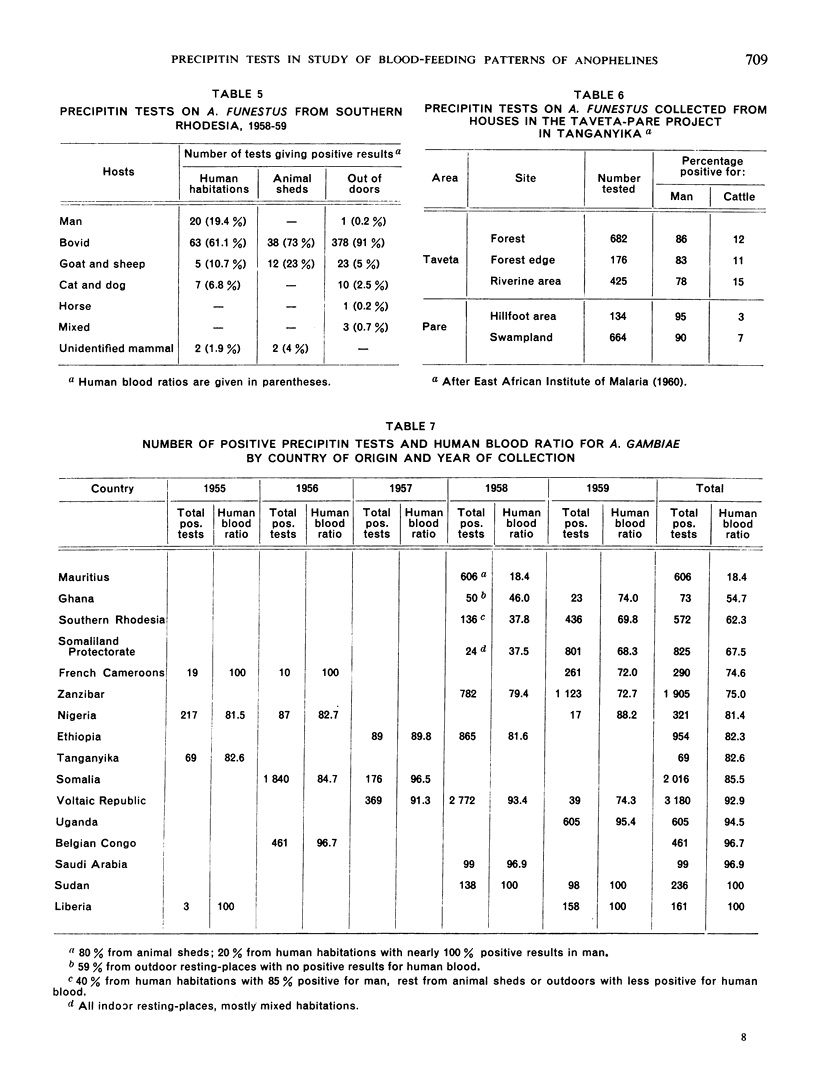
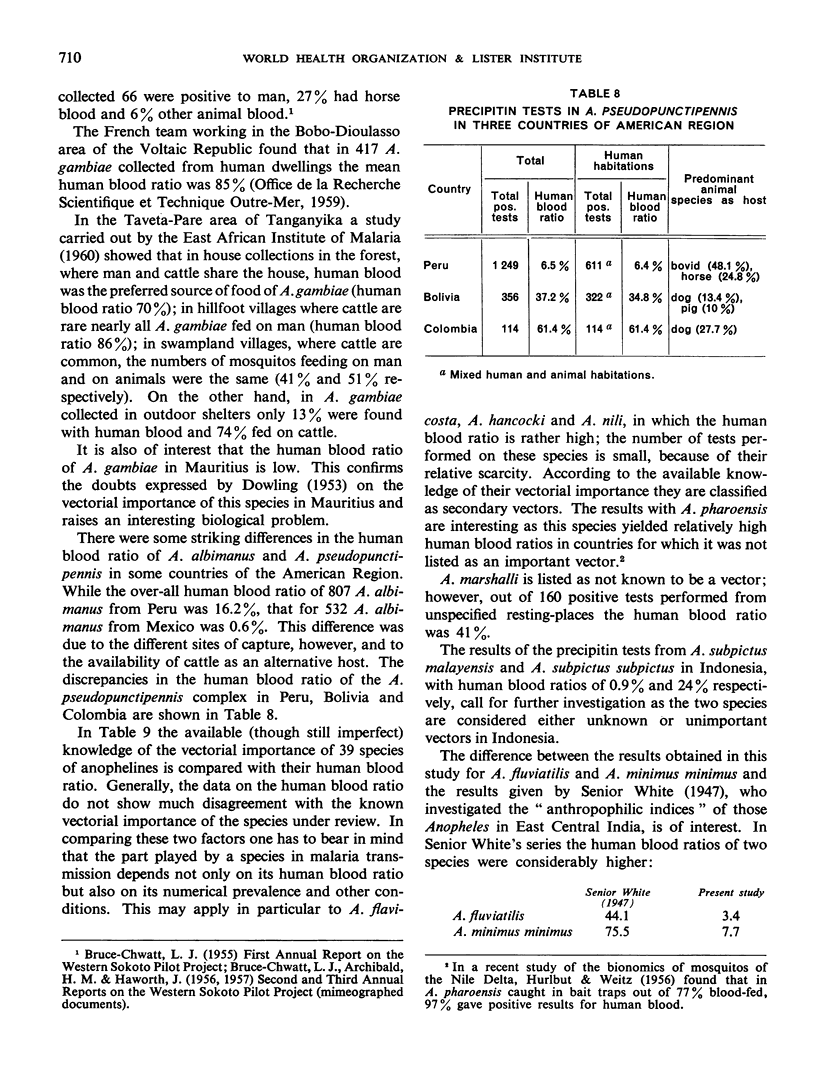
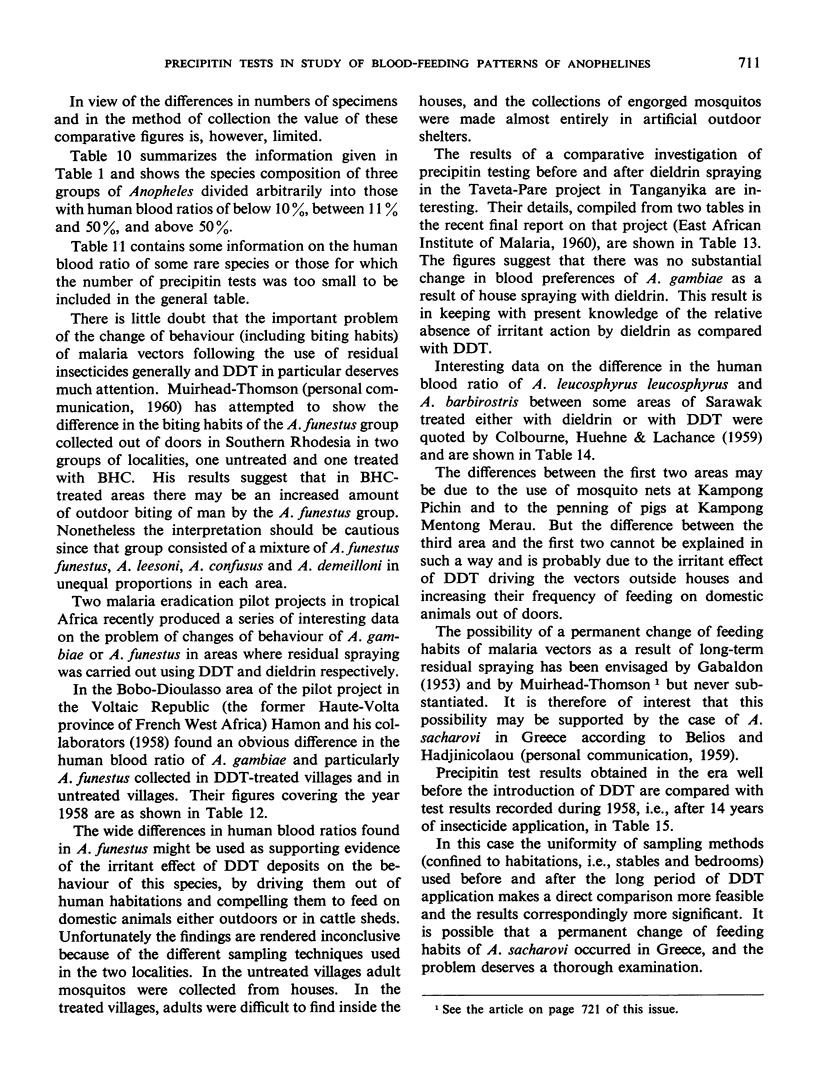
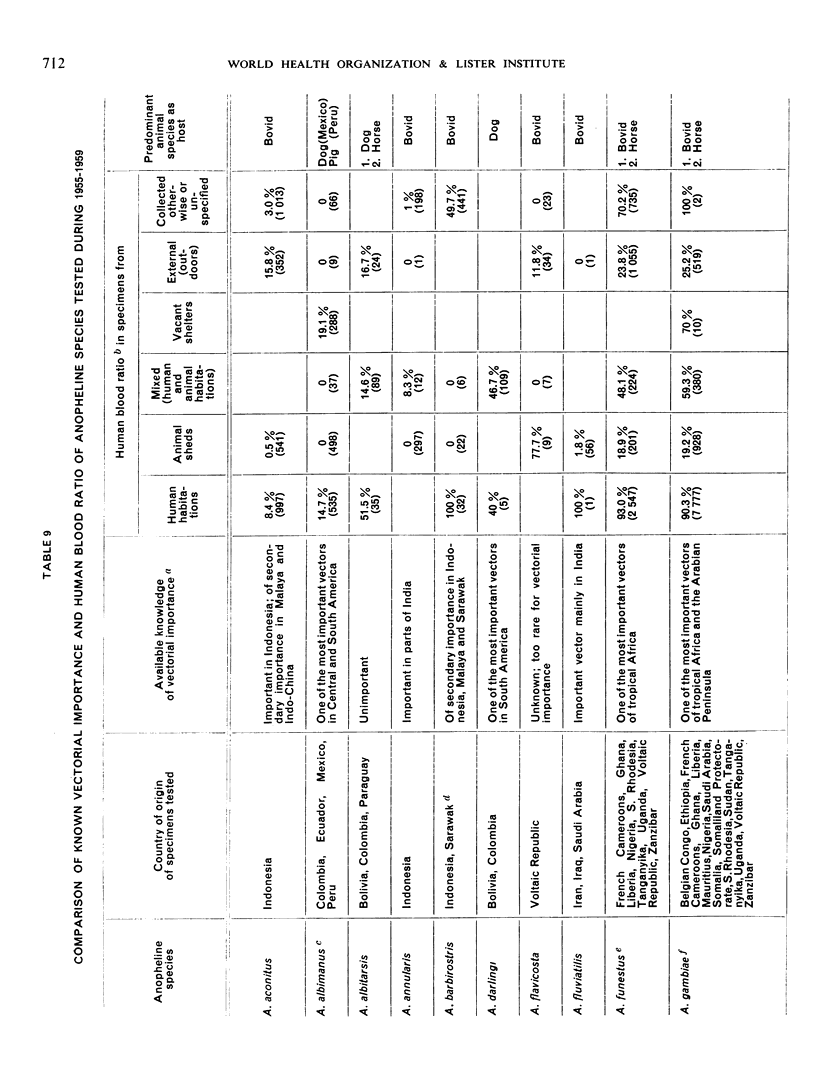
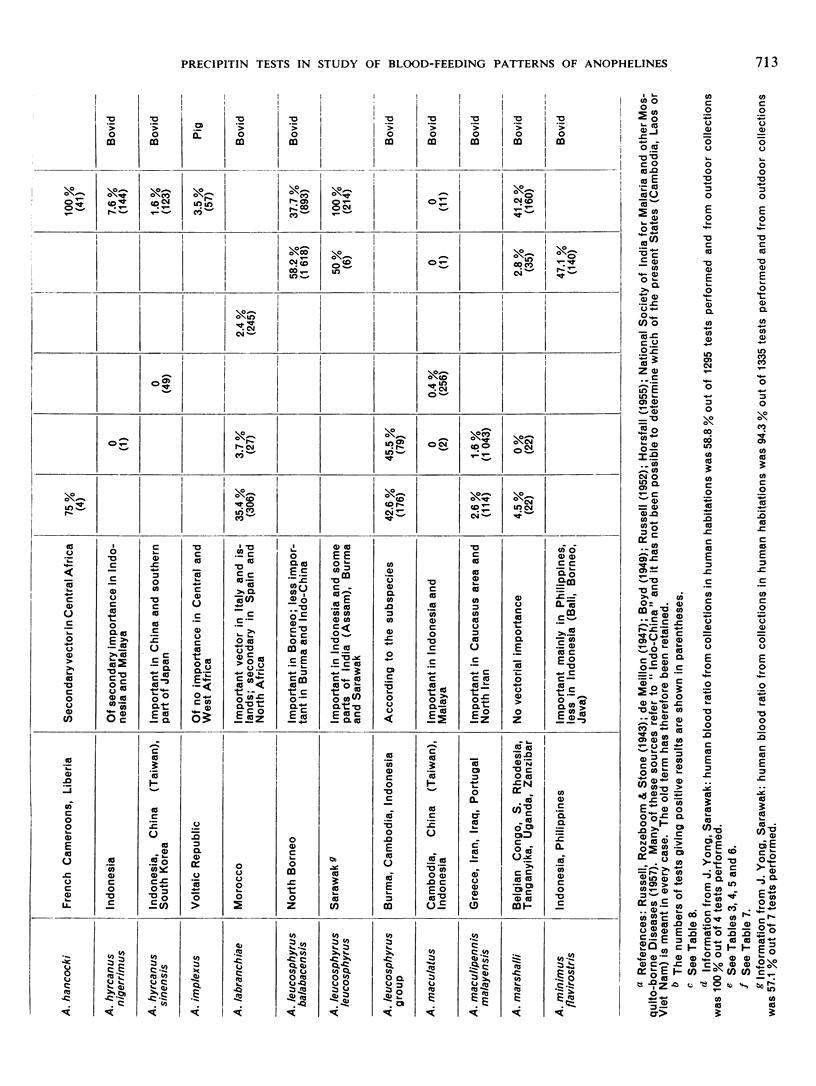
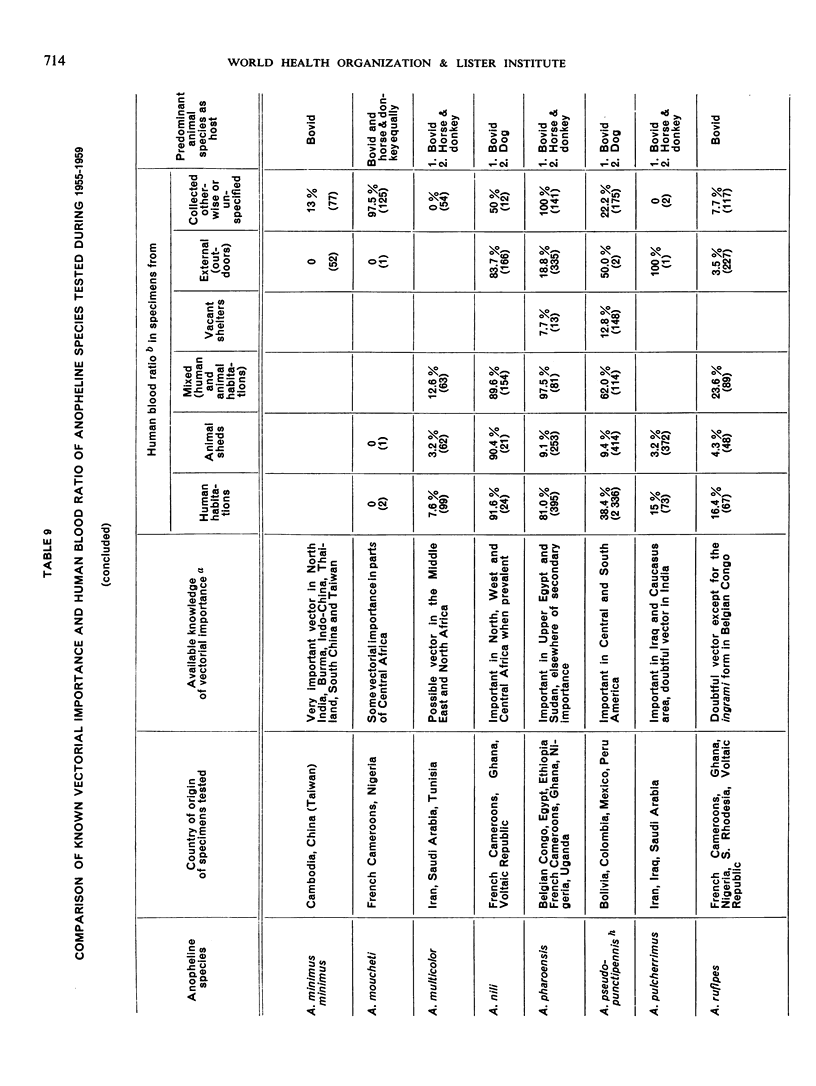
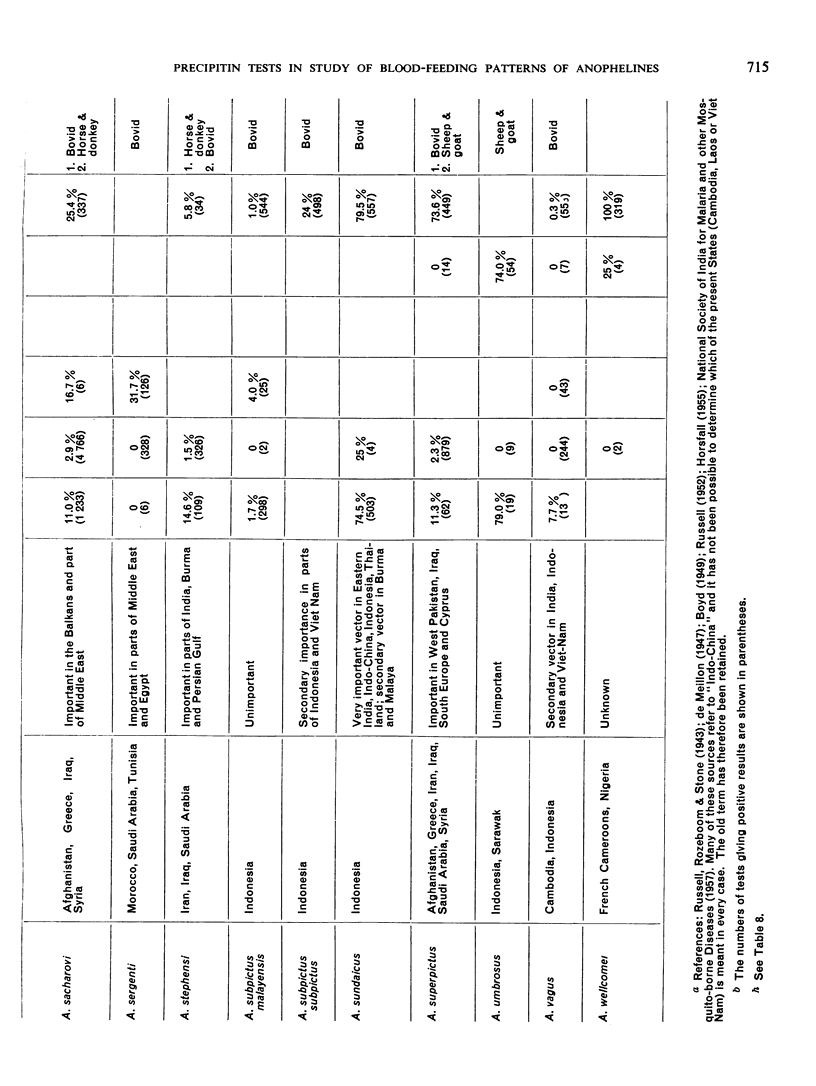
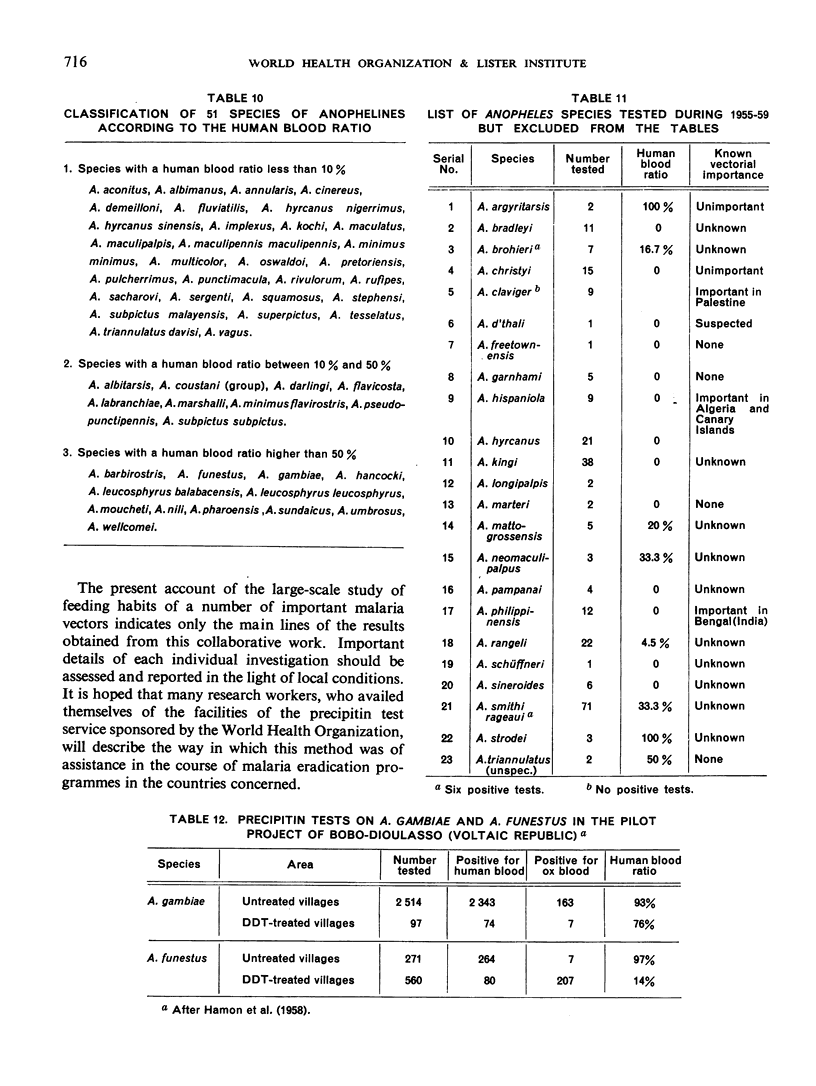
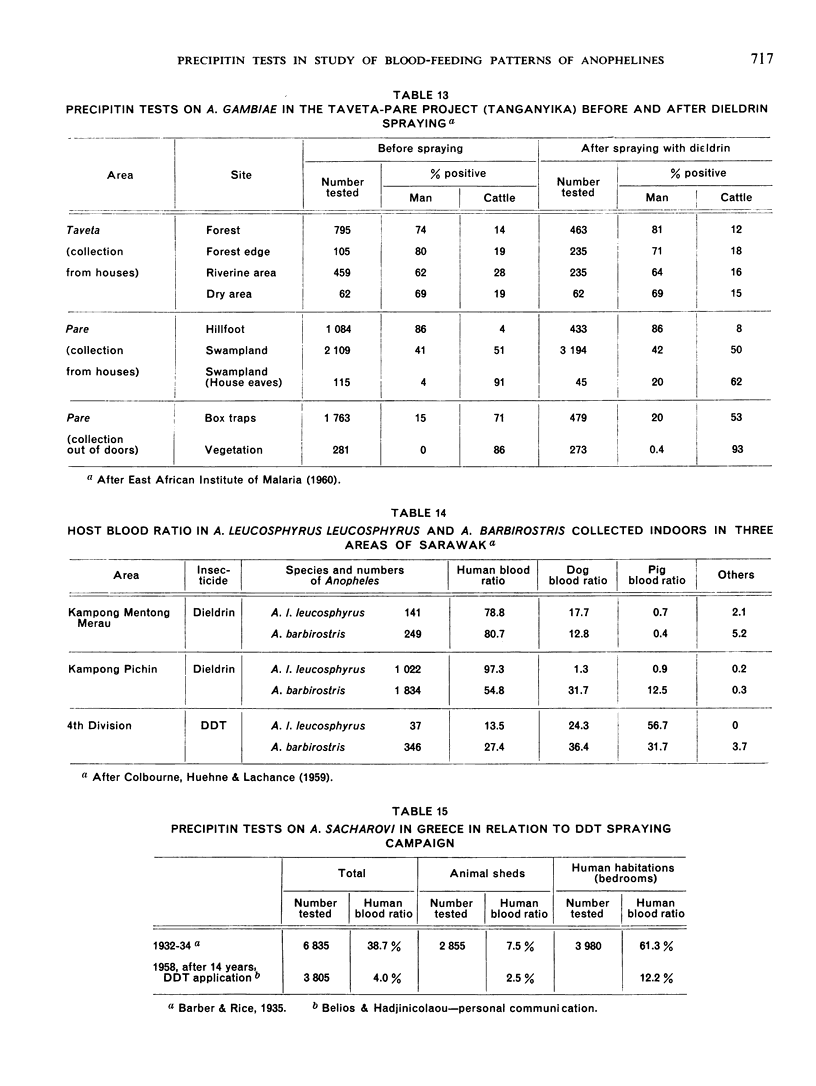
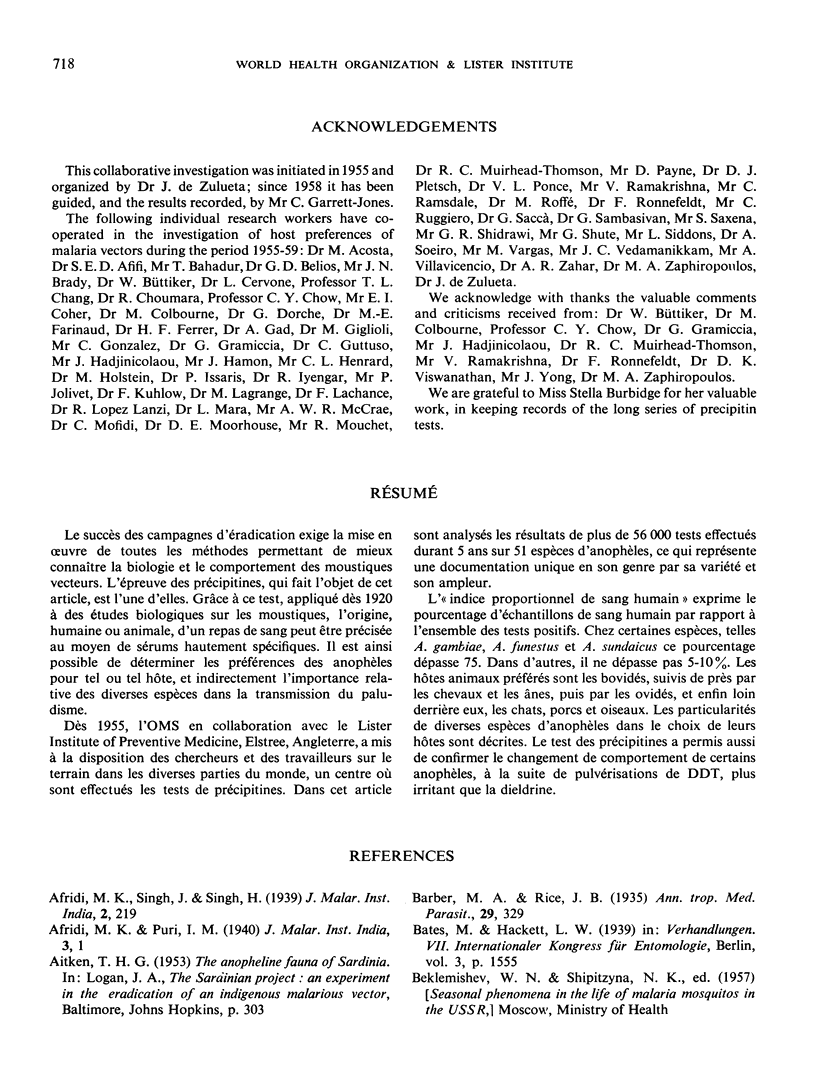
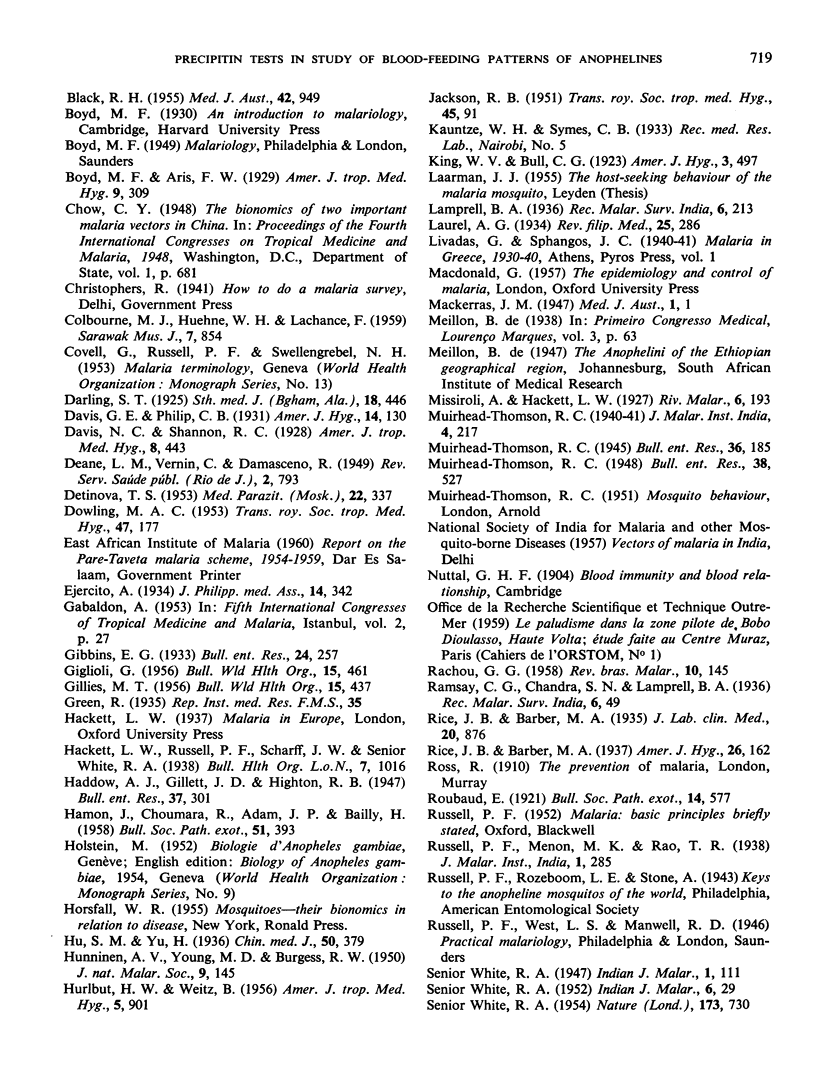
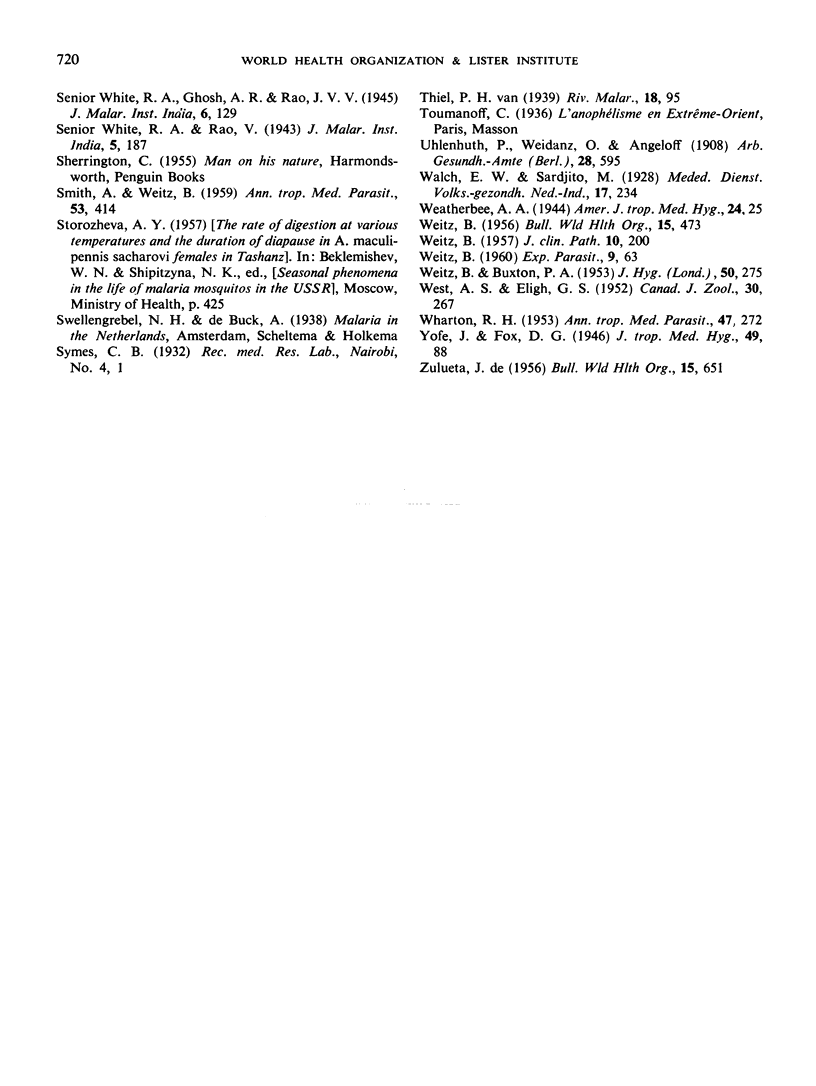
Selected References
These references are in PubMed. This may not be the complete list of references from this article.
- BLACK R. H. Observations on the behavior of Anopheles farauti laveran, an important malaria vector in the territory of Papua-New Guinea. Med J Aust. 1955 Jun 25;42(1 26):949–955. [PubMed] [Google Scholar]
- DE ZULUETA J. Malaria in Sarawak and Brunei. Bull World Health Organ. 1956;15(3-5):651–671. [PMC free article] [PubMed] [Google Scholar]
- DOWLING M. A. Control of malaria in Mauritius; eradication of Anopheles funestus and Aedes aegypti. Trans R Soc Trop Med Hyg. 1953 May;47(3):177–198. doi: 10.1016/0035-9203(53)90002-9. [DOI] [PubMed] [Google Scholar]
- GILLIES M. T. The problem of exophily in Anopheles gambiae. Bull World Health Organ. 1956;15(3-5):437–449. [PMC free article] [PubMed] [Google Scholar]
- HAMON J., EYRAUD M., SALES S., ADAM J. P. Observations sur le niveau de sensibilité au DDT, au dieldrin et au HCH de Culex pipiens ssp. fatigans dans la région de Bobo-Dioulasso, Haute-Volta, Afrique Occidentale Française. Report on the level of sensitivity to DDT, dieldrin & benzene hexachloride of Culex pipiens fatigans in the region of Bobo-Dioulasso, Haute-Volta, French West Africa. Bull Soc Pathol Exot Filiales. 1958 May-Jun;51(3):393–404. [PubMed] [Google Scholar]
- HUNNINEN A. V., YOUNG M. D., BURGESS R. W. The infection of anopheline mosquitoes by native avian malaria. J Natl Malar Soc. 1950 Jun;9(2):145–150. [PubMed] [Google Scholar]
- HURLBUT H. S., WEITZ B. Some observations on the bionomics of the common mosquitoes of the Nile Delta. Am J Trop Med Hyg. 1956 Sep;5(5):901–908. doi: 10.4269/ajtmh.1956.5.901. [DOI] [PubMed] [Google Scholar]
- JACKSON R. B. A review of investigations of the habits and pathogenicities of the common anophelines of Hongkong. Trans R Soc Trop Med Hyg. 1951 Aug;45(1):91–101. doi: 10.1016/s0035-9203(51)90584-6. [DOI] [PubMed] [Google Scholar]
- MACKERRAS I. M., MACKERRAS M. J. The bacteriological diagnosis of salmonella infections. Med J Aust. 1949 Jan 1;1(1):1–3. doi: 10.5694/j.1326-5377.1949.tb109001.x. [DOI] [PubMed] [Google Scholar]
- SENIOR-WHITE R. Adult anopheline behaviour patterns; a suggested classification. Nature. 1954 Apr 17;173(4407):730–730. doi: 10.1038/173730a0. [DOI] [PubMed] [Google Scholar]
- SMITH A., WEITZ B. The feeding habits of Anopheles gambiae, with particular reference to subsidiary hosts. Ann Trop Med Parasitol. 1959 Dec;53:414–415. doi: 10.1080/00034983.1959.11685940. [DOI] [PubMed] [Google Scholar]
- WEITZ B. An automatic dispenser for multiple serological titrations. J Clin Pathol. 1957 May;10(2):200–207. doi: 10.1136/jcp.10.2.200. [DOI] [PMC free article] [PubMed] [Google Scholar]
- WEITZ B. Identification of blood meals of blood-sucking arthropods. Bull World Health Organ. 1956;15(3-5):473–490. [PMC free article] [PubMed] [Google Scholar]
- WEITZ B. The antigenicity of sera of man and animals in relation to the preparation of specific precipitating antisera. J Hyg (Lond) 1952 Sep;50(3):275–294. doi: 10.1017/s0022172400019616. [DOI] [PMC free article] [PubMed] [Google Scholar]
- WHARTON R. H. The habits of adult mosquitoes in Malaya. III. Feeding preferences of anophelines. Ann Trop Med Parasitol. 1953 Oct;47(3):272–284. doi: 10.1080/00034983.1953.11685568. [DOI] [PubMed] [Google Scholar]


